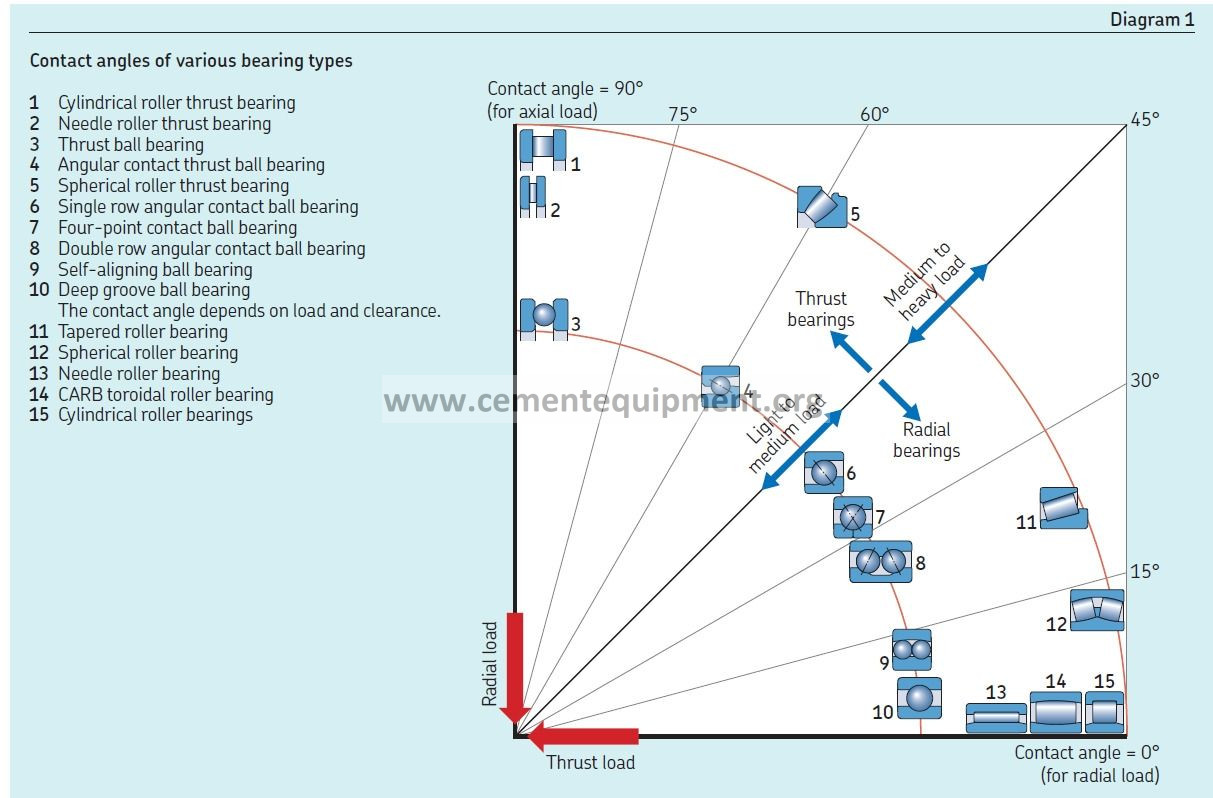Contents
Understanding Bearing Numbers and Contact Angles in Cement Industry Applications

if you need to download the exact details of this post and all the information on this website + excel sheets tailored for cement industry from expert who is working as a consultant from 37 years buy the book package now
[wpecpp name=”books package + updates ” price=”249.99″ align=”center”]
Introduction: Bearings play a critical role in the cement industry, where heavy loads, high temperatures, and harsh environments are common. Selecting the right bearings for specific applications is crucial to ensure reliable and efficient operation of equipment, minimize downtime, and maximize productivity. In this article, we will focus on the most commonly used bearing numbers and their contact angles in the cement industry, providing practical insights to help engineers and maintenance professionals make informed decisions.
Keywords: Bearing numbers, contact angles, cement industry, applications, reliability, efficiency
- Common Bearing Numbers in Cement Industry: There are several types of bearings used in the cement industry, each with its unique design and characteristics. Let’s take a closer look at the most commonly used bearing numbers:
- Deep Groove Ball Bearings (6000, 6200, 6300 series): Deep groove ball bearings are widely used in cement industry applications due to their versatility, durability, and high-speed capability. Bearing numbers such as 6000, 6200, and 6300 series refer to the size and design of the bearing, with the first digit denoting the bore size and the following digits indicating the series and modifications.
- Spherical Roller Bearings (200, 300, 400, 500 series): Spherical roller bearings are designed to accommodate heavy loads and misalignment, making them suitable for cement industry applications with high axial and radial loads. Bearing numbers such as 200, 300, 400, and 500 series denote the size and capacity of the bearing, with larger numbers indicating higher load-carrying capacity.
- Cylindrical Roller Bearings (NU, NJ, NUP, N series): Cylindrical roller bearings are commonly used in cement industry applications where high radial loads and moderate axial loads are present. Bearing numbers such as NU, NJ, NUP, and N series indicate the design and configuration of the bearing, with each series having its unique characteristics.
- Tapered Roller Bearings (300, 500, 800 series): Tapered roller bearings are ideal for applications in cement mills, crushers, and kilns, where heavy loads and high temperatures are prevalent. Bearing numbers such as 300, 500, and 800 series denote the size and capacity of the bearing, with larger numbers indicating higher load-carrying capacity.
Keyword: Deep Groove Ball Bearings, Spherical Roller Bearings, Cylindrical Roller Bearings, Tapered Roller Bearings, Bearing numbers
- Understanding Contact Angles in Bearings: Contact angle is an important parameter that determines the load-carrying capacity, speed, and stiffness of a bearing. Different bearing types have different contact angles, which impact their performance in cement industry applications. Let’s explore the contact angles of various bearing types:
- Deep Groove Ball Bearings: Deep groove ball bearings typically have a contact angle of 0 degrees, which means they primarily carry radial loads and are not designed to withstand heavy axial loads.
- Spherical Roller Bearings: Spherical roller bearings usually have a contact angle ranging from 1 to 2.5 degrees, allowing them to accommodate both radial and axial loads. The higher the contact angle, the higher the axial load-carrying capacity of the bearing.
- Cylindrical Roller Bearings: Cylindrical roller bearings typically have a contact angle of 0 degrees, which means they primarily carry radial loads. However, certain designs may have a small contact angle to accommodate limited axial loads.
- Tapered Roller Bearings: Tapered roller bearings have a contact angle between 10 to 30 degrees, depending on the design. The larger the contact angle, the higher the axial load-carrying capacity of the bearing.
if you need to download the exact details of this post and all the information on this website + excel sheets tailored for cement industry from expert who is working as a consultant from 37 years buy the book package now
[wpecpp name=”books package + updates ” price=”249.99″ align=”center”]